How to Soundproof a Wall - The Easiest and Most Effective Method for Wall Soundproofing
Are you tired of unwanted noise intruding on your peace and quiet? Soundproofing your walls is the key to creating a serene living or working environment.
In this comprehensive guide, we'll explore how to soundproof a wall effectively, delving into regulations, common challenges, best practices, and innovative solutions like DECIBEL's MUTE SYSTEM. But before we dive into the details, let's begin with some essential facts and statistics about soundproofing.
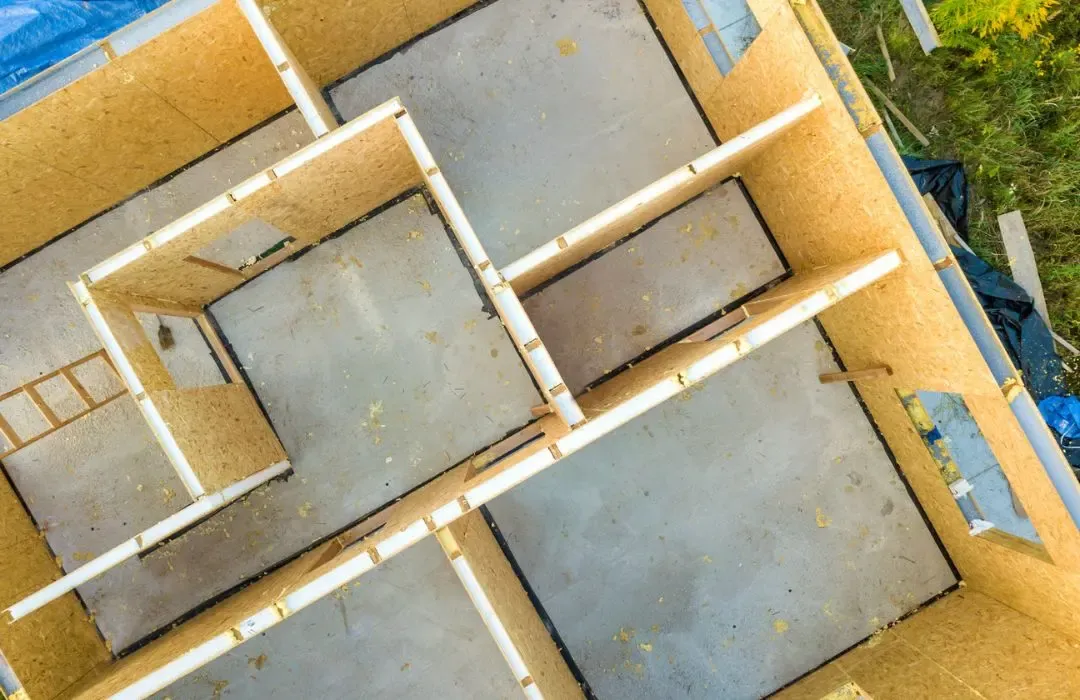
Building Regulations for Soundproofing a Wall
In the United States, the International Building Code (IBC) sets forth requirements for sound insulation, particularly in multifamily dwellings. The IBC references standards such as ASTM E90 and ASTM E413 for measuring sound transmission.
Key Questions to Answer Before Soundproofing a Wall
Before embarking on your soundproofing journey, you must address a few key questions.
What is the wall constructed of?
The construction of your wall matters when planning soundproofing. Different materials have varying sound transmission properties. For example, lightweight materials like plasterboard or timber studs allow more sound to pass through than dense materials like brick or concrete.
Understanding whether you’re working with a solid wall, cavity wall, or partition helps determine whether to focus on adding mass, creating separation (decoupling), or inserting absorptive layers such as acoustic insulation or a MUTE SYSTEM configuration.
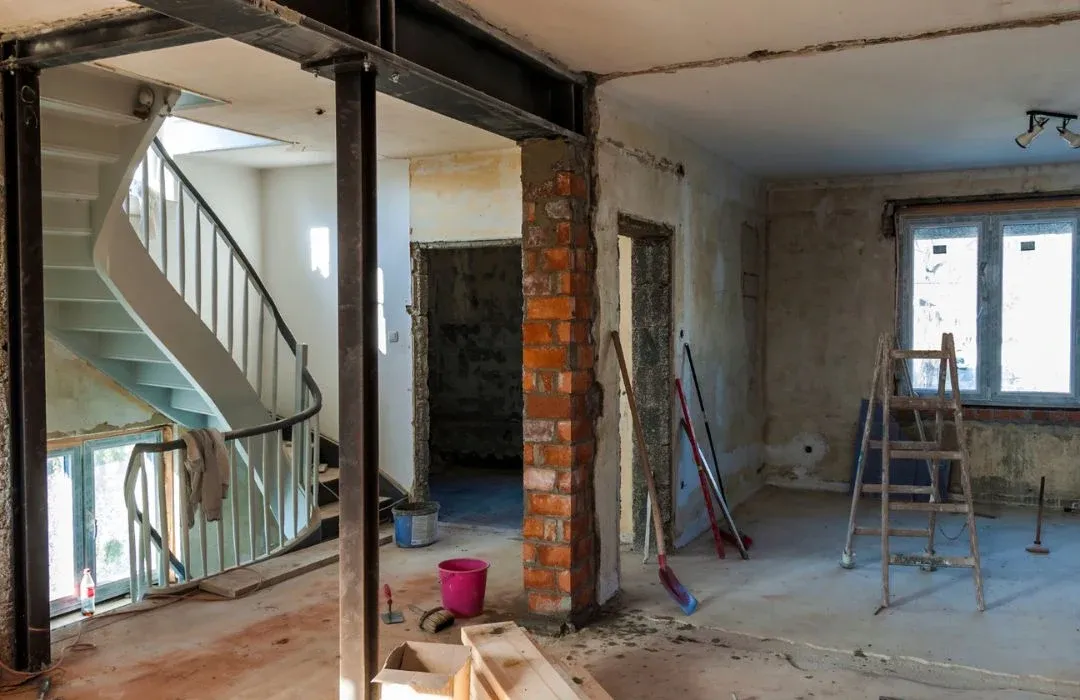
What level of noise is being heard?
Measuring the noise level you're dealing with helps determine the soundproofing materials and methods required. You don’t necessarily need a sound level meter—though a decibel app can give you a rough estimate.
For example, typical conversation is around 60 dB, while traffic noise might range from 70–85 dB. Knowing the dB level helps select materials with appropriate Sound Transmission Class (STC) ratings or Rw values, so you’re not under- or over-engineering your solution.
What type of noise is being heard?
Identifying the nature of the noise, whether it's airborne or impact noise, informs the choice of soundproofing techniques. Airborne noise (voices, music, TV) travels through the air and penetrates surfaces, while impact noise (footsteps, slamming doors) transmits through building structures.
Each requires a different strategy: airborne noise is addressed by adding mass and sealing gaps, while impact noise often calls for resilient systems or decoupling methods that absorb vibration—like those used in DECIBEL's layered MUTE SYSTEM.
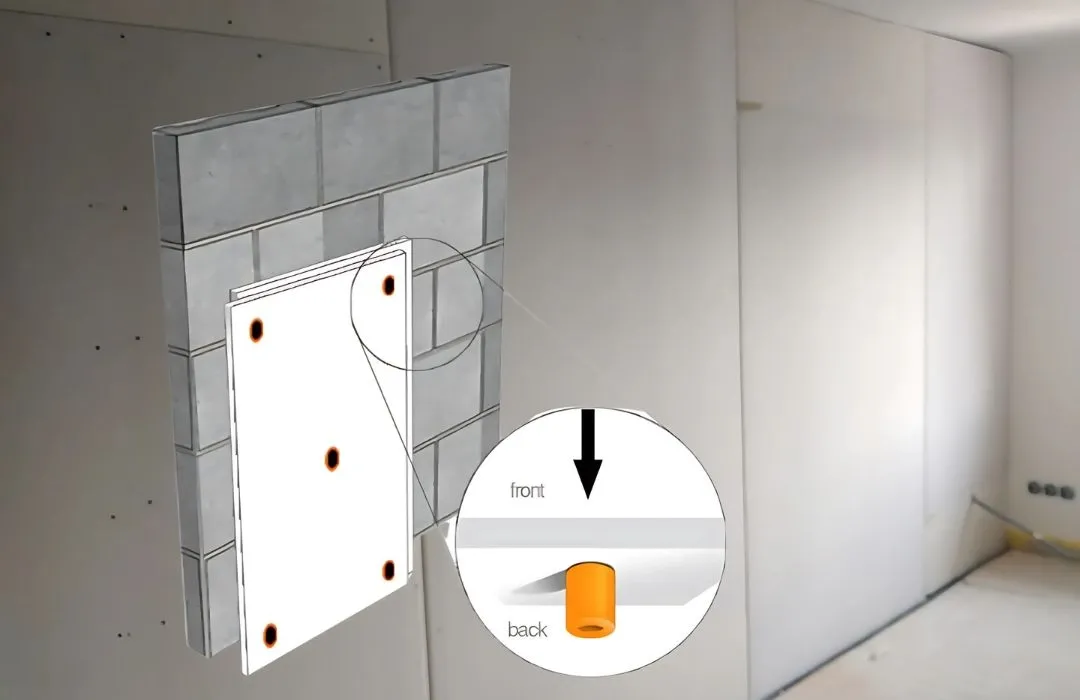
Things to Consider When Soundproofing a Party Wall
Soundproofing a party wall, shared with a neighbour, requires special attention. Unlike isolated internal walls, party walls often transmit not just airborne noise but also vibrations and structural-borne sound. To effectively reduce noise, consider the following factors:
Add mass to the wall
Increasing the wall’s density through the addition of mass helps to block sound transmission. This is especially important for lightweight walls, where sound can pass easily through thin materials.
Consider adding multiple layers of soundproof drywall, cement boards, or products like DECIBOARD, a high-density insulation board specifically designed to block airborne noise across a broad frequency range. The goal is to increase the surface mass per unit area (kg/m²), which directly correlates to a wall's ability to block sound.
Dampen sound vibration and energy
Sound vibrations can travel through walls, especially if the wall structure is rigid and continuous. To prevent this, introduce damping materials like resilient channels, acoustic isolation clips, or decoupled metal studs. These disrupt the vibrational pathway and reduce resonance.
DECIBEL’s MUTE SYSTEM incorporates damping layers within its build-up, converting vibrational energy into heat and thus lowering the transmission of impact noise from adjoining properties.
The drum effect
Some walls can act like a drum, amplifying noise. This happens when a wall lacks internal damping or when surfaces resonate at certain frequencies—especially in plasterboard constructions. Addressing this means breaking the resonant structure.
You can do this by layering materials with different densities, adding soft/porous layers like acoustic foam, or using vibration-absorbing adhesives between panel layers. With DECIBEL's modular systems, this issue is solved through multi-layered, non-parallel constructions that absorb and diffuse sound instead of amplifying it.
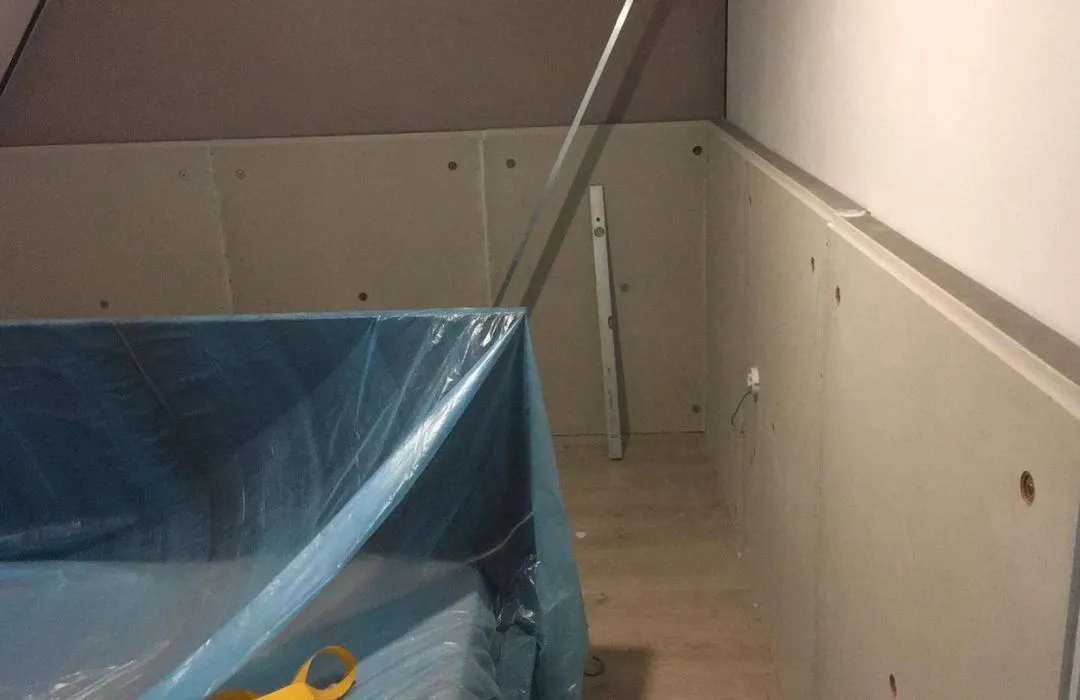
Best Soundproofing Solutions to Reduce Unwanted Noise from Noisy Neighbours
Dealing with noisy neighbours can be a challenge. Luckily for you, we have gathered the best soundproofing solutions to help you regain your peace and quiet.
The best solutions for reducing noise from noisy neighbours often involve a combination of techniques. These can include adding mass to your walls, sealing gaps and sound leaks, and using acoustic panels or insulation materials.
Adding mass to your walls helps block airborne sound by making the wall more resistant to vibration. Materials like acoustic plasterboard or high-density panels increase the sound transmission loss (STL), which directly reduces how much sound passes through.
Sealing gaps and leaks is equally critical. Even small openings around sockets, skirting boards, or along window frames can allow sound to leak through. Acoustic sealant or putty pads can plug these weak points and improve your wall’s overall soundproofing performance.
For more stubborn or intense noise issues, resilient layers—such as isolation strips or decoupling frames—can be introduced. These prevent vibrations from travelling through the wall, effectively ‘breaking the path’ of the sound.
By combining these methods, you’ll not only reduce the noise you hear but also improve the overall acoustic comfort of your room.
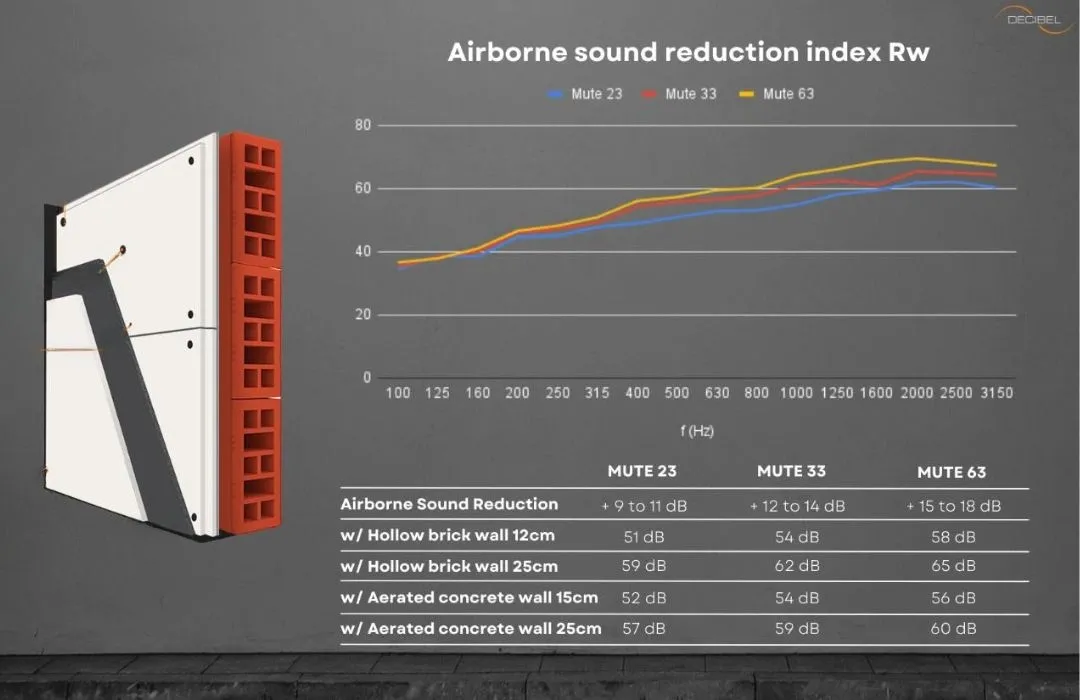
The Best Wall Soundproofing Solutions for an Existing Wall
Soundproofing an existing wall involves unique challenges. Discover the most effective solutions to reduce noise from already-constructed walls.
Soundproofing can be achieved through methods such as applying acoustic panels, soundproof drywall, and acoustic insulation. It's also essential to address common sound gaps and leaks.
One of the biggest limitations with existing walls is that you're often working with finished surfaces, which means invasive structural changes aren’t always possible—or desirable. That’s why retrofit-friendly solutions are essential.
Acoustic panels offer an efficient and non-invasive way to reduce reverberation and dampen airborne noise. High-density panels can be surface-mounted without needing to strip down plasterboard or affect the building’s structure. For example, DECIBEL’s fabric-covered panels or diffusers can both absorb and scatter unwanted frequencies, improving clarity in the room.
For more comprehensive performance, soundproof drywall can be layered over the existing wall. These systems combine high mass with damping layers and can significantly boost your wall’s sound transmission class (STC). To avoid losing too much interior space, look for thin but high-density solutions that maximise performance without bulky installation.
Acoustic insulation—such as mineral wool—can be added inside wall cavities if you're opening the structure during renovation. In existing walls without cavity access, surface systems like the MUTE SYSTEM integrate isolation, mass, and damping layers into a compact format. This makes them ideal for wall upgrades in apartments, offices, or even historical buildings where structural changes must be minimal.
Finally, don’t ignore the small stuff. Sealing perimeter joints, socket boxes, or even pipe penetrations with acoustic sealant can close off invisible sound paths that compromise your efforts.
Together, these approaches offer a smart, layered defence against noise, letting you reclaim the comfort of your space without tearing it all down.
The Most Common Sound Gaps
To effectively soundproof a wall, you must identify and address common sound gaps, such as solid walls, badly fitted window frames, ventilation ducts, window panes, trickle vents, chimneys, air bricks, doors, roofs, and more.
Solid walls, especially those made of lightweight materials, are prone to sound transmission. Additionally, sound can infiltrate through gaps around windows, doors, and even ventilation systems. Identifying and sealing these sound gaps is a crucial step in effective soundproofing.
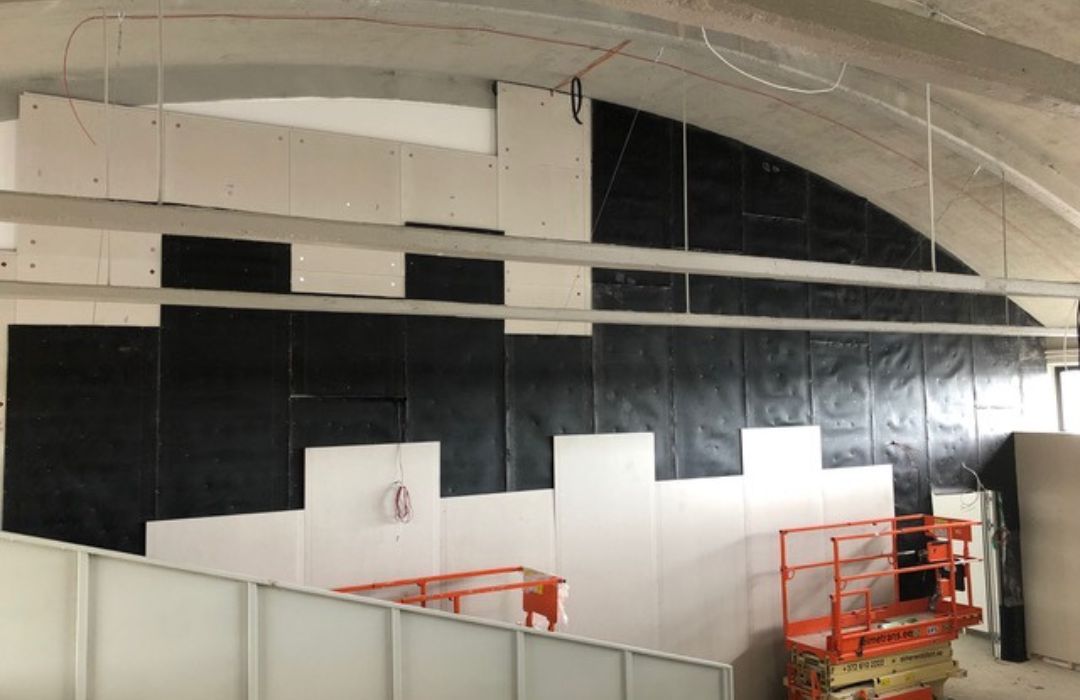
The Most Common Wall Soundproofing Methods
Several soundproofing methods are available, each with its own advantages. Learn about sound damping, adding mass, decoupling, sound absorption, and creating distance to understand their applications and effectiveness.
Sound Damping
This method involves using materials that convert sound energy into heat, effectively reducing sound transmission. Damping materials—such as viscoelastic compounds or damping mats—are particularly effective against mid to high-frequency airborne noise.
These are often used in layered wall assemblies, sandwiched between plasterboards or applied directly to structural surfaces. Products like DECIBEL's DCvisco are engineered to break down vibrational energy, preventing it from travelling through rigid surfaces like drywall or studs.
Adding Mass
Increasing the density of a wall by adding mass helps block sound. Mass is your friend when fighting airborne noise, especially voices, music, or television from adjacent rooms. Materials like mass-loaded vinyl (MLV), cementitious boards, or dense drywall add weight and reduce a wall’s tendency to vibrate.
The heavier the wall, the harder it becomes for sound waves to pass through it. In technical terms, this raises the Sound Transmission Class (STC) rating, a key metric in acoustic performance.
Decoupling
Decoupling techniques separate wall layers to minimise sound transmission, especially low-frequency or structural (impact) noise. This is achieved by mechanically separating two sides of a wall, often with resilient channels, sound isolation clips, or double-stud framing.
By removing direct contact between materials, vibrational energy is disrupted—greatly reducing transmission. The MUTE SYSTEM from DECIBEL integrates decoupling principles within its modular design, making it easier to apply in retrofit scenarios.
Sound Absorption
Sound-absorbing materials, like acoustic panels, absorb sound waves and reduce reflection within a room. This method helps manage internal reverberation and echo, improving speech clarity and comfort. Materials such as open-cell foam, mineral wool, and PET felt panels trap sound energy within their porous structure, converting it to heat.
While absorption is not a standalone soundproofing method, it plays a vital role in reducing reflected noise and enhancing the overall acoustic experience inside a space.
Creating Distance
Increasing the space between sound sources and the receiving wall can minimise noise transmission, especially in design stages. Air gaps act as natural buffers for sound, reducing intensity as it travels.
This principle is applied in double wall assemblies, cavity walls, and room-in-room constructions—where isolation is critical, such as in studios or cinemas. Even in simple applications, placing freestanding acoustic partitions or furniture strategically can help reduce perceived noise levels.
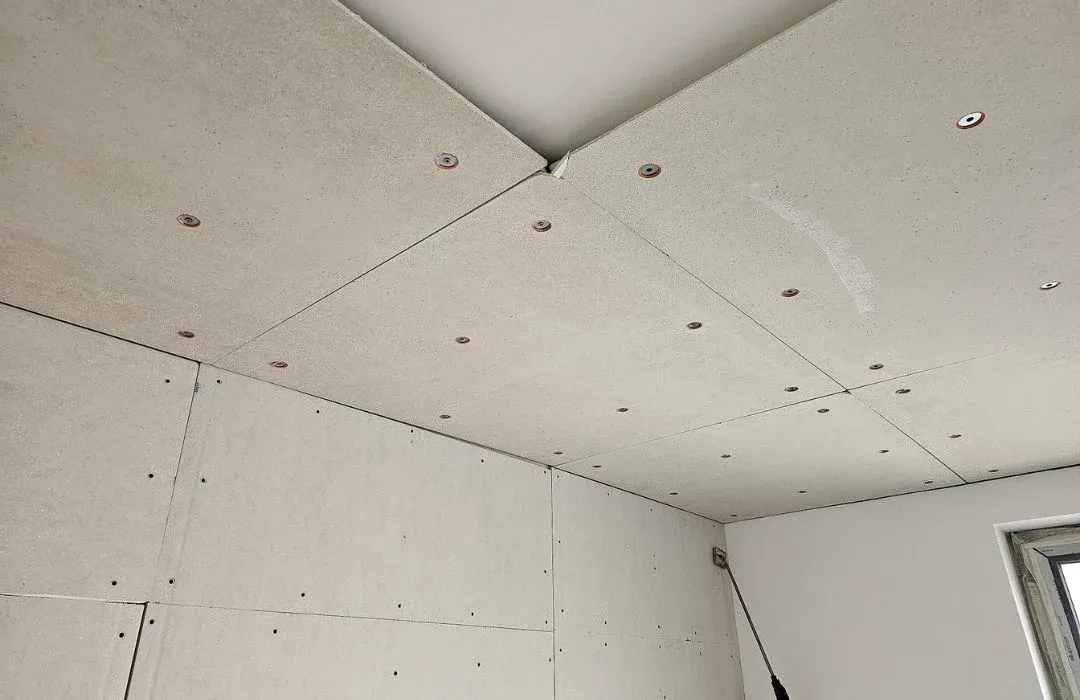
Soundproofing Solutions for Various Wall Types: From Studs to Solid Brick and More
Different types of walls require specific soundproofing techniques. Choosing the right soundproofing solution depends on what we are talking about, like stud walls, solid brick walls, party walls, cavity walls, drywall partitions, concrete walls, and more.
Stud Walls
Soundproofing stud walls often involves adding insulation and using resilient channels to prevent sound transfer. These walls are typically hollow, which makes them especially vulnerable to both airborne noise and vibrational resonance. To mitigate this, dense insulation like mineral wool is placed between the studs.
Then, sound isolation clips are installed to decouple the drywall from the framing, reducing direct structural vibration. A system like DECIBEL’s MUTE SYSTEM 33 is ideal here, as it combines absorption, decoupling, and mass in a compact multilayer solution.
Solid Brick Walls
Adding mass to solid brick walls can effectively reduce noise transmission. Although these walls already offer some natural density, layering them with mass-loaded vinyl (MLV) or acoustic plasterboard can further improve sound isolation.
These additions raise the STC rating, helping block out mid and high-frequency noise. Consider using an acoustic sealant to close all openings on the wall.
Party Walls
As stated above, soundproofing party walls shared with neighbours requires attention to both sides of the wall. Since noise may be transmitted through structure-borne paths (via shared joists or floors), treating only one side might not be sufficient.
Effective strategies include double-layer drywall with damping compound, insulation behind acoustic panels, and sealing flanking paths like floor-wall joints.
Cavity Walls
Cavity walls provide a natural buffer for sound, but additional insulation can further reduce noise. Injecting or placing dense acoustic insulation within the cavity helps absorb sound waves travelling through the void.
Caution is needed to avoid thermal bridging or moisture traps—products like acoustic mineral wool or acoustic foam are often used, depending on wall thickness and access.
Drywall Partitions
Adding acoustic insulation within drywall partitions enhances soundproofing. These non-load-bearing walls are common in offices, but their light construction often lets noise pass freely. A combination of acoustic insulation, decoupling systems, and multi-layer plasterboard increases performance significantly.
Concrete Walls
Mass-loaded vinyl and sound-absorbing materials work well for concrete walls. Concrete is dense, but it reflects sound heavily, making spaces feel loud or echoey.
For airborne noise reduction, MLV can be bonded directly to the wall, followed by a layer of drywall or acoustic panels. For internal echo control, diffusive surfaces or high-NRC absorption panels can dramatically improve comfort and clarity.
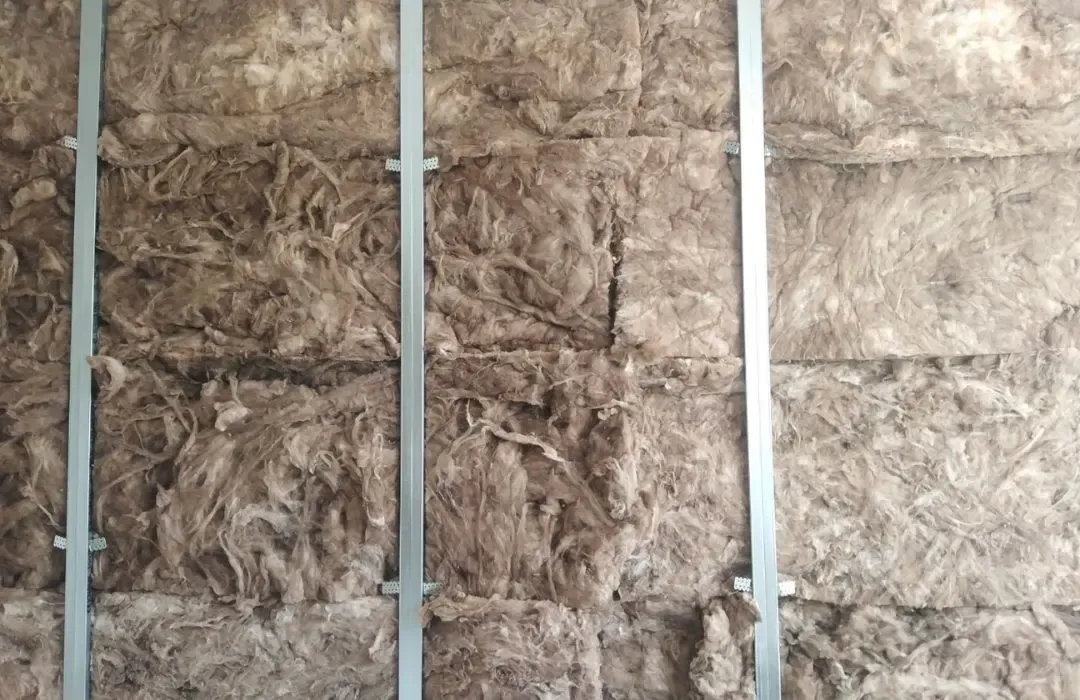
Tools You'll Need to Soundproof a Wall
To successfully soundproof a wall, gather the necessary tools and materials, including insulation materials, safety equipment, screws, a screwdriver, resilient bars, and acoustic sealant. If it all sounds too complicated, you can always rely on us!
- Insulation materials: Soundproofing often requires insulation materials like acoustic panels, mass-loaded vinyl, and fibreglass.
- Safety equipment: Protect yourself with gloves, masks, and safety glasses when working with insulation and sealants.
- Screws: You'll need screws to attach acoustic panels or other soundproofing materials to the wall.
- Screwdriver: Essential for securing materials in place.
- Resilient bars: They decouple the wall from the structure, reducing sound transmission.
- Acoustic sealant: Seal gaps and sound leaks with specialized acoustic sealant to prevent noise infiltration.
MUTE SYSTEM
Now, let's get familiar with DECIBEL's innovative MUTE SYSTEM. This revolutionary solution is designed to enhance soundproofing with its unique features.
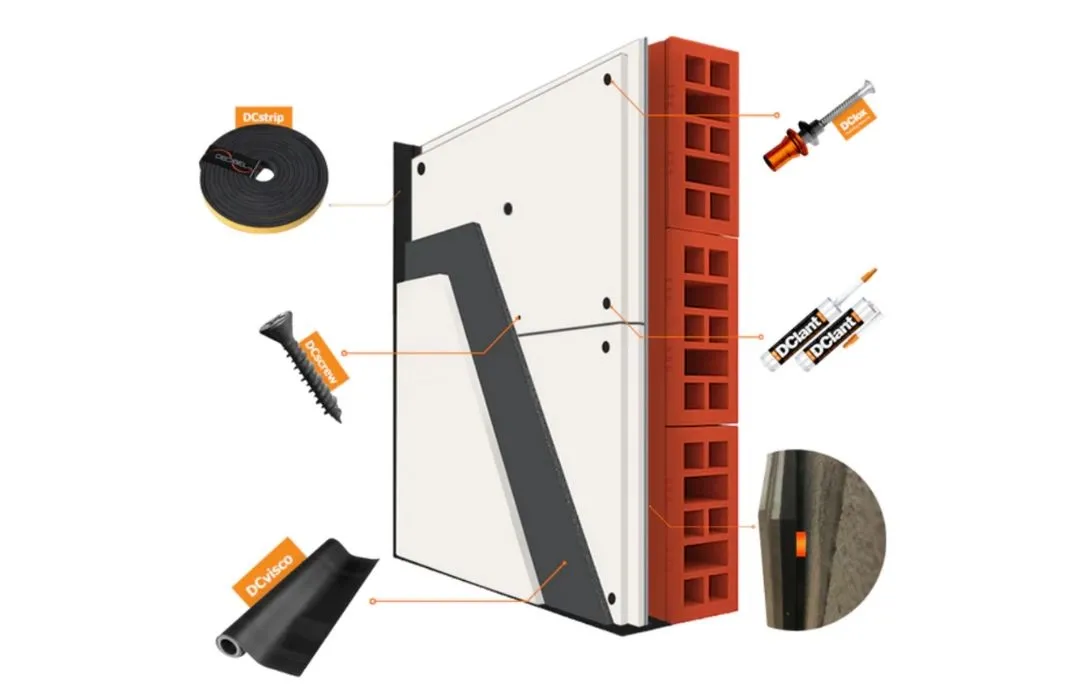
Benefits and Use Cases
The MUTE SYSTEM offers various benefits and versatile use cases. It is a comprehensive soundproofing solution that provides numerous benefits, including:
- Effective reduction of noise from both airborne and impact sources.
- Easy installation and compatibility with various wall types.
- Versatile applications in residential and commercial spaces.
- Enhanced comfort and privacy for your home or workspace.
- Installation and Accessories
What about the installation process of the MUTE SYSTEM and the accessories that complement its effectiveness? We've got you covered!
Installing the MUTE SYSTEM is straightforward and can be customised to suit your specific needs. The system comes with a range of accessories, including acoustic panels, brackets, and sealants, to ensure a seamless soundproofing experience.
Soundproofing Case Studies
How about we explore some real-world examples of the MUTE SYSTEM in action? We are eager to show you its success in soundproofing projects.
Case Study 1: Residential Apartment
Challenge: The client sought to reduce noise from neighbouring apartments.
Solution: Installation of the MUTE SYSTEM resulted in a significant noise reduction, allowing the living space to become a peaceful environment.
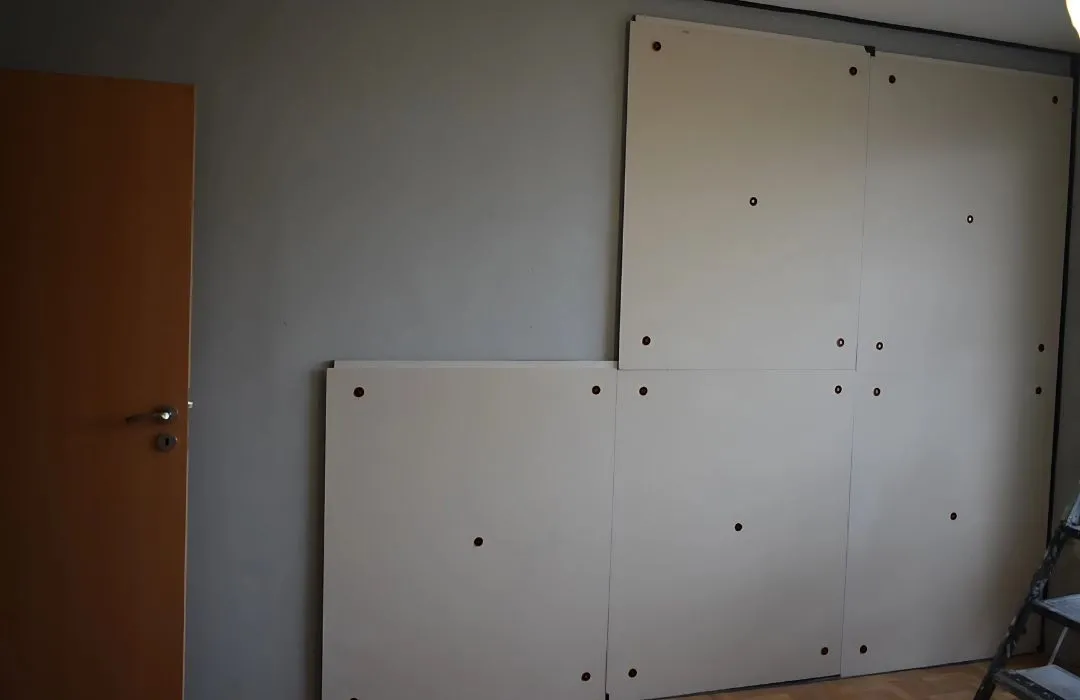
Case Study 2: Office Space
Challenge: An open-plan office environment required acoustic improvements.
Solution: The MUTE SYSTEM was applied to create separate work zones, effectively minimising sound transfer and enhancing productivity.
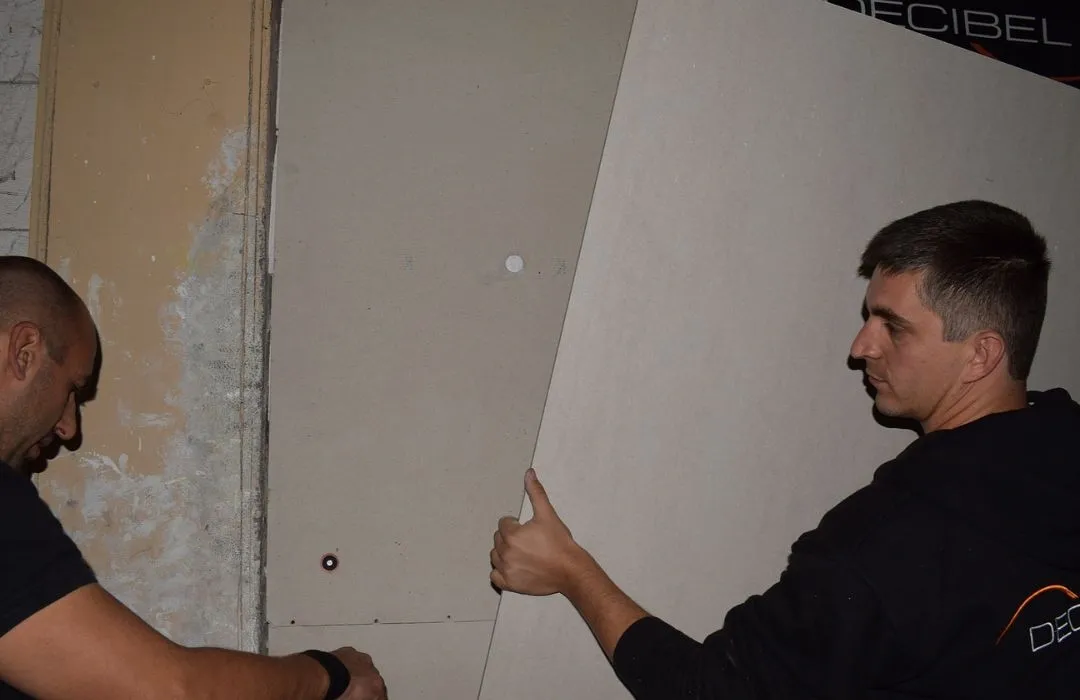
Things to Consider when Soundproofing a Wall
Don't overlook key elements like plugs, radiators, and chimneys when soundproofing your wall. These often neglected areas can significantly impact noise reduction.
Plugs, radiators, and chimneys are potential sound leakage points that should not be ignored. Use sealants and insulation to effectively soundproof these areas and achieve comprehensive noise reduction.
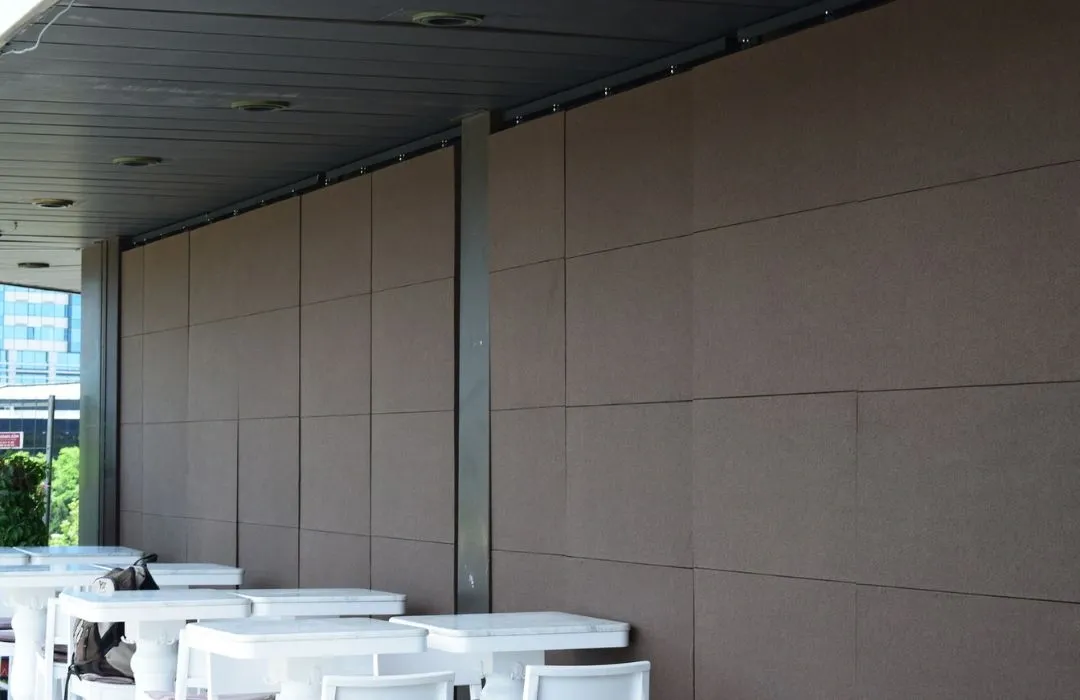
Frequently Asked Questions
-
Is wall soundproofing expensive?
The cost of wall soundproofing varies based on factors like the size of the area, chosen materials, and the extent of the soundproofing. While some methods can be budget-friendly, comprehensive soundproofing may involve a moderate investment.
-
Is wall soundproofing effective?
Yes, when done correctly, wall soundproofing is highly effective in reducing noise intrusion, providing a quieter and more comfortable living or working environment.
-
Can you soundproof a wall from noisy neighbours?
Yes, it's possible to soundproof a wall to reduce noise from noisy neighbours. Techniques include adding mass, using acoustic panels, and sealing gaps.
-
What is the best way to soundproof a wall?
The best method depends on factors like the type of wall, the nature of the noise, and your budget. Common methods include adding mass, decoupling, and using sound-absorbing materials.
-
What are the best materials for soundproofing a wall?
Effective soundproofing materials include acoustic panels, mass-loaded vinyl, acoustic insulation, and acoustic sealants.
-
Can you soundproof a wall without construction?
While some soundproofing methods may require minor construction work, there are non-invasive options, like acoustic panels and soundproof curtains.
-
Can you soundproof a room without damaging walls?
Yes, non-invasive soundproofing solutions like acoustic panels and rugs are available to reduce noise without damaging walls.
-
Can you soundproof walls without removing drywall?
Yes, it's possible to soundproof walls without removing drywall. Methods such as adding mass and using acoustic panels can be applied directly to the existing wall surface.
-
Is there a difference in soundproofing techniques for internal and external walls?
Soundproofing techniques for internal and external walls can vary. External walls may require weatherproofing in addition to soundproofing.
-
Are there budget-friendly options for soundproofing a wall?
Yes, budget-friendly options include using acoustic curtains, rugs, and weatherstripping to seal gaps.
-
How does the thickness of wall materials impact soundproofing?
Thicker wall materials can be more effective at blocking sound. Adding mass or using double drywall can enhance soundproofing.
-
Can soundproofing also improve insulation and energy efficiency?
Yes, soundproofing materials like acoustic insulation can also improve insulation and energy efficiency in a space.
-
Are there DIY methods for soundproofing walls that are effective?
Yes, DIY methods like using weatherstripping, adding rugs, or applying acoustic panels can be effective in reducing noise.
-
Are there temporary solutions for soundproofing walls, especially for renters?
Temporary soundproofing solutions like removable acoustic panels or curtains can be effective for renters who can't make permanent modifications.
-
What are the potential health benefits associated with effective wall soundproofing?
Effective soundproofing can lead to reduced stress, improved sleep quality, and overall better health by providing a quieter and more comfortable living or working environment.
With this comprehensive guide, you're well-equipped to tackle any soundproofing project and new, more relaxing environment. Whether it's understanding regulations, choosing the right methods, or exploring innovative solutions like the MUTE SYSTEM, you know how to create a quieter, more comfortable space.



